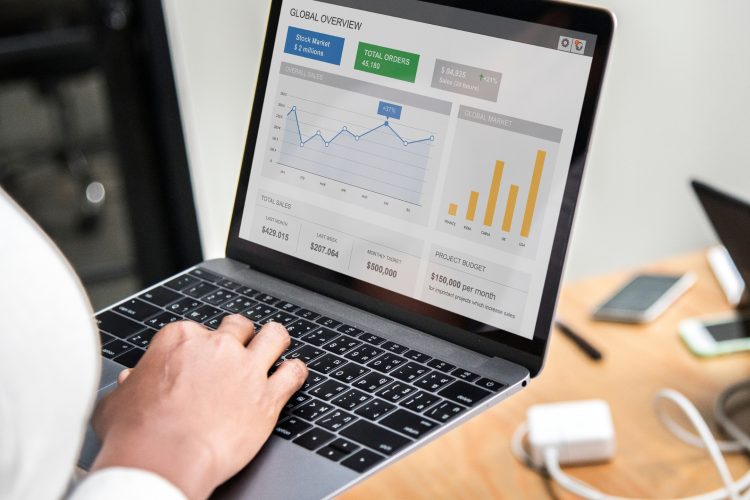
Pay Per Click is a Digital Advertising which allows businesses to display their ads on search engines and other platforms within an advertising network such Websites, Mobile Applications etc. But in Pay Per Click, Advertisers only pay when someone actually clicks on their ads. It’s like having your own personal salesperson who only gets paid if they bring in customers for your campaign.
In well known traditional advertising methods, advertisers pay upfront without any guarantee of results. But Its completely different with Pay Per Click Services. In Pay Per Click Advertisers only when Someone clicks on their link. It’s a game-changer for businesses looking to maximize their marketing budget and reach their target audience. Moreover, Display ads can also further enhance the impact of your campaigns.
Nowadays, All size of advertisers from small startups to global corporations, are choosing the PPC because it of it unparalleled control over campaigns. You can choose target keywords and specific audiences who see your ads based on factors like location, demographics, and even interests. So with live real-time data & analytics, you can quickly adjust your campaigns to make things work better.
Whether you’re a Small Business Owner or an individual looking to increase sales or improve conversions, PPC advertising can assist in growing your online presence. Here we dive deeper into this world of online advertising and uncover its secrets to success, including tips on how to optimize your CPC and create eye-catching display ads.
Discover the mechanics of Pay Per Click and its functioning, explained by a trusted Digital Marketing Agency in Ahmedabad.
How does PPC advertising work?
PPC (pay per click) advertising is a popular strategy for marketing online. It helps advertisers bring visitors to their websites by running CPC (cost per click) campaigns on platforms like search engine results pages (SERPs) and Google Search Engine.
- Auction-based Advertising: Imagine a digital auction house at the core of CPC advertising. Whenever an advertiser sets up a campaign or enters a website, a real-time Google ad auction takes place. The platform considers things like bid amount, ad quality, relevance, and user experience to decide which ads appear.
- Bids and Budgets: To join the ad auction, advertisers place bids on keywords or target audience traits. These bids reflect the most they’re willing to pay for each click on their ads, especially in Google Shopping campaigns. Advertisers also control their spending by setting daily or monthly budgets for different types of PPC campaigns.
- Ad Rank Calculation: Where your ad shows up on SERPs depends on its Ad Rank. This rank is like a mix of bid amount and ad quality score. Ad quality involves factors such as how many people are likely to click your ad (click-through rate or CTR), how good the landing page is, and how relevant the ad is. Higher Ad Rank means better chances of your ad being in top spots.
Targeting Options
PPC advertising offers various targeting options for advertisers to effectively reach their desired audience in a Google campaign. With CPC, businesses can optimize their campaign to reach their target audience effectively.
- Keyword Targeting: Ads can be triggered when users search for specific keywords related to your products or services.
- Location Targeting: You can specify geographic regions where you want your ads to appear.
- Device Targeting: Ads can be tailored based on the device used by potential customers, such as desktops, tablets, or mobile devices.
- Demographic Targeting: You can narrow down your audience based on age, gender, income level, and other demographic factors.
Ad Formats
PPC advertising campaigns support different ad formats, including Google display extensions. This allows businesses to choose the most suitable option for their digital marketing goals.
- Text Ads: These are simple ads consisting of a headline, description, and display URL. They appear on search engine results pages alongside organic search results.
- Display Ads: Visual ads that include images or videos. They can be displayed on websites within the Google Display Network or other partner sites.
- Shopping Ads: Primarily used by e-commerce businesses, these ads showcase product details like images, prices, and merchant information.
- Video Ads: Engaging video content that can be shown before, during, or after online videos on platforms like YouTube.
- App Install Ads: Designed to promote mobile applications and encourage users to download them directly from app stores.
Ad Performance Tracking
One of the key advantages of PPC advertising is the ability to track ad performance accurately using Google’s conversion tracking and analytics tools. Through these tools, advertisers gain insights into metrics such as click-through rate (CTR), cost per click (CPC), conversion rate (CR), return on ad spend (ROAS), and more. This data helps optimize campaigns for better results on the Google Display Network.
Continuous Optimization
Successful PPC advertising on the Google Display Network requires ongoing optimization efforts. By analyzing performance data and making adjustments to bids, keywords, targeting options, ad copy, and landing pages in your Google account, advertisers aim to improve campaign efficiency and maximize return on investment (ROI).
What’s the difference between PPC, SEM and SEO?
PPC: Pay Per Click
Let’s start by diving into the world of pay per click (PPC) advertising on Google. In this digital age, businesses are constantly looking for effective ways to reach their target audience online. PPC is a powerful advertising model that allows advertisers to display their ads on the Google network, websites, or social media platforms and pay only when someone clicks on their ad using their Google account.
With Google PPC, you have control over your account budget and can set a maximum bid for each click. This means that you only pay when someone actually engages with your ad by clicking on it. This method provides instant display for your business as your ads show at the top of Google search engine results pages (SERPs) or on relevant websites.
One of the main advantages of PPC is its ability to deliver immediate results on Google. Unlike other marketing strategies, PPC puts your brand in front of potential customers right away through display ads. It also offers precise targeting options in your account, allowing you to reach specific demographics, locations, or interests with a targeted bid.
To make the most out of your Google PPC campaigns, it’s crucial to conduct thorough keyword research and create compelling ad copy that entices users to click. Optimizing landing pages for conversions is essential in order to maximize the return on your investment in Google display advertising.
SEM: Search Engine Marketing
SEM encompasses a broader range of strategies beyond just pay per click advertising. While PPC focuses solely on paid search ads, SEM includes both paid and organic efforts to increase visibility and drive traffic from search engines like Google.
In addition to running PPC campaigns, SEM involves optimizing website content through search engine optimization (SEO) for Google. By improving various aspects of a website such as meta tags, headings, page load speed, and overall user experience, businesses can enhance their organic rankings in Google search engine results.
The goal of SEM is not only to attract visitors through paid advertisements but also to improve organic search rankings and increase visibility in the long term. By combining PPC with SEO, businesses can achieve a comprehensive Google search engine marketing strategy that covers both immediate results and sustainable growth.
SEO: Search Engine Optimization
Now let’s take a closer look at search engine optimization (SEO) and its impact on google ad campaigns. Unlike PPC and SEM, SEO focuses solely on organic efforts to improve a website’s visibility in search engine results pages. It involves optimizing various elements of a website to make it more appealing to search engines and ultimately rank higher for relevant keywords. SEO is an important strategy for businesses looking to secure top ad spots on google ad platforms.
SEO is a long-term investment that requires continuous effort and optimization. By implementing best practices such as keyword research, on-page optimization, link building, and technical improvements, businesses can gradually climb the ranks in organic search results on Google.
The main advantage of SEO is its ability to generate consistent traffic without ongoing advertising costs. Once you’ve achieved a top position on Google for your targeted keywords, you’ll benefit from increased visibility and organic clicks without having to pay for each individual click.
It’s important to note that while SEO takes time to yield results, the long-term benefits for a website optimized for google are significant. A well-optimized website can attract highly targeted traffic from google, establish credibility in the industry, and generate leads or sales on an ongoing basis.
Why is PPC important for Small Business?
Cost-effective Advertising
PPC, or pay-per-click advertising, is a game-changer for small businesses looking to make a big impact on a limited budget. Unlike traditional forms of advertising that require hefty upfront investments, Google PPC allows you to set your own budget and pay only when someone clicks on your ad. This means you’re not wasting precious dollars on people who aren’t interested in what you have to offer. With Google PPC, every dollar you spend goes directly towards attracting potential customers who are actively searching for products or services like yours.
Instant Visibility and Targeted Reach
In the fast-paced digital world we live in, speed is everything. One of the major advantages of PPC is its ability to provide instant visibility for your small business on Google. As soon as your Google ads are approved, they can start appearing at the top of Google search engine results pages (SERPs), giving you immediate exposure to potential customers. This level of visibility on Google is especially crucial for small businesses trying to compete with larger competitors who have already established their online presence on Google.
Furthermore, PPC allows you to target specific demographics, locations, and even interests on Google. You can tailor your ads to reach a highly relevant audience based on factors such as age, gender, income level, and more. By narrowing down your targeting parameters, you ensure that your ads are seen by people who are most likely to convert into paying customers. This laser-focused approach not only maximizes the return on your investment but also helps build brand awareness among the right audience on Google.
Measurable Results and Real-time Optimization
Unlike traditional forms of advertising where it’s difficult to track the effectiveness of campaigns accurately, PPC provides comprehensive data and analytics that allow you to measure results with precision. Through platforms like Google Ads or Bing Ads, you gain access to valuable insights such as click-through rates (CTRs), conversion rates, cost per acquisition (CPA), and more.
This wealth of data empowers small businesses to make informed decisions and optimize their campaigns in real-time with the help of Google. For instance, if you notice that certain Google keywords are performing exceptionally well, you can allocate more budget towards them to maximize your returns. On the other hand, if a particular ad is underperforming on Google, you can quickly modify or pause it altogether. This level of control and flexibility ensures that your advertising efforts on Google are always aligned with your business goals.
Enhanced Brand Exposure and Credibility
In today’s crowded digital landscape, building brand exposure and credibility on Google is paramount for small businesses. PPC offers an opportunity to increase your brand’s visibility across various online platforms beyond just search engines. Display ads allow you to showcase your products or services on relevant websites visited by your target audience.
Moreover, when users repeatedly see your brand appearing at the top of Google search results or on popular websites they visit, it reinforces the perception of credibility and trustworthiness. The more frequently people encounter your brand through Google PPC advertising, the more likely they are to remember it when making purchasing decisions.
Competitive Advantage in Local Markets
For small businesses operating in local markets, leveraging location targeting options provided by PPC platforms like Google can be a game-changer. By using these options, you can ensure that your Google ads are shown primarily to people within a specific radius of your business.
What is important for PPC strategy and campaign planning?
Keywords: The Foundation of a Successful PPC Strategy
Keywords are the backbone of any pay-per-click (PPC) strategy, including those used on Google. They are the words or phrases that users enter into search engines like Google when looking for products or services. Choosing the right Google keywords is crucial as they determine whether your ads will be shown to potential customers on Google. Start by brainstorming a list of relevant Google keywords that align with your business offerings. Put yourself in the shoes of your target audience and think about what terms they would use to find your products or services on Google.
Once you have a list of potential keywords, it’s time to conduct keyword research using tools like Google Keyword Planner or SEMrush. These tools provide valuable insights into search volume, competition, and other metrics that can help you identify high-potential keywords for your ad spots. Look for keywords with a good balance between search volume and competition – too much competition may make it difficult to achieve visibility in your ad groups, while low search volume means fewer people are searching for those terms. This research will help you optimize your ad rank and choose the most effective ad formats.
When selecting keywords for your Google ads, consider both broad match and long-tail variations. Broad match allows your ads to appear for searches related to your chosen Google keyword, even if they include additional words. On the other hand, long-tail Google keywords are more specific and often have lower competition. They may have lower search volume but can yield higher conversion rates because they attract more qualified leads.
Ad Copy: Captivating Your Audience
Creating compelling ad copy is essential for grabbing users’ attention on Google and enticing them to click on your Google ads. Your Google ad copy should be concise yet persuasive, highlighting the unique selling points of your product or service. Use active language and strong calls-to-action (CTAs) to encourage users to take action on Google.
One effective approach to improve your ad copy is to address pain points or challenges faced by your target audience in your Google ad copy. By showing that you understand their needs and offering a solution, you can increase the likelihood of attracting clicks on Google. Consider incorporating Google keywords into your ad copy to make it more relevant and improve your quality score on Google.
It’s also important to test different variations of ad copy to see what resonates best with your audience. A/B testing can help you identify which elements of your ads are performing well and which need improvement. Experiment with different headlines, descriptions, CTAs, and even visuals to find the winning combination that drives the highest click-through rates (CTRs) on Google.
You can also contact our Agency for Your Pay Per Click Management Services.
Landing Pages: Converting Clicks into Conversions
While attracting clicks from Google is crucial, converting those clicks into actual customers is the ultimate goal of any PPC campaign. This is where landing pages play a vital role. A landing page is a dedicated web page designed specifically for users who click on your Google ads.
When designing landing pages for Google, keep in mind that they should align closely with the content of your Google ads and provide a seamless user experience. The messaging on the landing page should be consistent with the ad copy, ensuring that users find what they were promised when they clicked on your Google ad.
Make sure your landing pages have clear and compelling calls-to-action that guide users towards taking the desired action, whether it’s making a purchase, filling out a form, or signing up for a newsletter. Remove any distractions that may lead users away from completing the desired conversion. Additionally, optimize your landing pages for search engines like Google to increase visibility and drive more traffic to your site.
Optimizing landing pages for mobile devices is crucial for improving the performance of Google search ads. With an increasing number of users accessing websites through their smartphones or tablets, it is important to ensure that ad extensions and ad groups are properly optimized for mobile.
What are the types of PPC ads?
Different Types of PPC Ads
There are several different types of pay per click (PPC) ads that businesses can utilize to reach their target audience and drive traffic to their websites. Each type of Google PPC ad serves a unique purpose and offers distinct advantages. Let’s explore some of the most common types of Google PPC ads.
- Search Ads: Search ads are the most basic and widely used form of PPC advertising. These ads appear at the top or bottom of search engine results pages (SERPs) when users search for specific keywords or phrases related to your business. They typically consist of a headline, description, and a clickable link that directs users to your website.
- Display Ads: Display ads are visually appealing banner or text-based advertisements that appear on various websites across the internet. Unlike search ads, display ads do not show up in search engine results but instead rely on targeting options such as demographics, interests, and website placements to reach potential customers.
- Shopping Ads: Shopping ads are specifically designed for e-commerce businesses selling products online. These ads feature product images, prices, and other relevant information directly within search engine results pages or on partner websites like Google Shopping.
- Video Ads: Video advertising has gained immense popularity in recent years due to the rise of platforms like YouTube. Video ads can be placed before, during, or after online videos and often offer businesses an opportunity to engage with their audience through storytelling or demonstrations.
- App Install Ads: App install ads aim to encourage users to download mobile applications onto their devices. These ads typically appear within other apps or as sponsored listings in app stores.
- Social Media Ads: Social media platforms like Facebook, Instagram, Twitter, LinkedIn, and Pinterest offer powerful advertising opportunities through their native ad formats. These platforms allow businesses to target specific demographics based on user profiles and behaviors.
- Remarketing Ads: Remarketing ads target users who have previously visited your website or interacted with your brand in some way. By displaying ads to these individuals as they browse other websites or social media platforms, remarketing helps keep your brand top of mind and encourages them to return.
Advantages and Benefits
Each type of Google PPC ad offers its own set of advantages and benefits for businesses. Here are some key reasons why you should consider incorporating these different types of Google PPC ads into your marketing strategy.
- Increased Visibility: PPC ads allow you to quickly gain visibility and appear at the top of search engine results pages or on popular websites, ensuring that potential customers see your brand.
- Targeted Audience: With various targeting options available, you can ensure that your ads reach the right audience based on demographics, interests, behavior, or specific keywords.
- Cost Control: PPC advertising allows you to set a budget and only pay when someone clicks on your ad. This ensures that you have control over how much you spend on advertising and can adjust accordingly.
- Measurable Results: Unlike traditional advertising methods, PPC campaigns provide detailed analytics and performance metrics. This data allows you to measure the success of your campaigns accurately and make data-driven decisions for optimization.
- Quick Results: With PPC ads, you can start driving traffic to your website almost immediately. Unlike organic search efforts that take time to build momentum, PPC provides instant visibility and potential conversions.
Conclusion
Now that you have a better understanding of pay per click (PPC) advertising, its importance for small businesses, and the key factors to consider in your PPC strategy and campaign planning, it’s time to take action.
PPC advertising is an effective way to drive targeted traffic to your website and increase conversions. By bidding on keywords relevant to your business, you can ensure that your ads appear prominently on search engine results pages. This allows you to reach potential customers at the exact moment they are searching for products or services like yours.
Unlike search engine optimization (SEO) and search engine marketing (SEM), which focus on organic search results, PPC offers immediate visibility and control over your ad campaigns. While SEO and SEM are important for long-term growth, PPC can deliver quick results and help you gain traction in competitive markets.
For small businesses with limited budgets, PPC provides a cost-effective solution. You only pay when someone clicks on your ad, making it easier to track the return on investment (ROI) of your advertising efforts. With careful planning and optimization, even small businesses can compete with larger competitors in the digital landscape.
When developing your PPC strategy, it’s crucial to research and select the right keywords that align with your target audience’s intent. Creating compelling ad copy that speaks directly to your audience will improve click-through rates and conversion rates.
There are various types of PPC ads available depending on your goals. Text ads are the most common form where advertisers create concise headlines and descriptions. Display ads use images or videos to capture attention while remarketing ads target users who have previously visited your website.
By leveraging PPC advertising effectively, small businesses can level the playing field in the digital arena. It allows you to reach potential customers at precisely the right moment while providing measurable results for optimal ROI.






